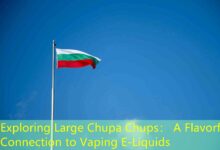Blowing Clouds: The Art and Science of Vape Exhalation
In recent years, vaping has surged in popularity, becoming a cultural phenomenon that transcends age groups and geographic boundaries. At its core, this trend is fueled not only by the desire to enjoy flavored e-liquids but also by the visually captivating act of “blowing clouds.” This article will delve into various facets of cloud blowing, exploring its significance within the vaping community, the techniques involved, and the science behind vapor production.
The Rise of Vaping Culture
Vaping initially emerged as a smoking cessation tool designed to help individuals transition away from traditional tobacco products. However, it quickly morphed into a lifestyle choice, giving birth to a diverse subculture. Central to this culture is the concept of cloud chasing, where enthusiasts aspire to produce large, billowing clouds of vapor. This pursuit is not merely for show; it embodies both technical skill and artistic expression, showcasing individual style and creativity.
The Mechanics of Vapor Production
To understand the art of blowing clouds, one must first grasp the basic mechanics of vapor production. E-cigarettes function by heating a liquid (commonly referred to as e-liquid or vape juice) that contains propylene glycol, vegetable glycerin, nicotine, and flavorings. The heating element, known as a coil, vaporizes this liquid, which is then inhaled and exhaled as vapor.
The composition of the e-liquid plays a crucial role in cloud production. Higher vegetable glycerin (VG) concentrations generally lead to thicker, denser clouds, while lower VG levels paired with higher propylene glycol (PG) produce smaller, more flavorful puffs. Understanding these ratios allows vapers to tailor their experience according to their desired outcomes.
Techniques for Blowing Clouds
Cloud blowing entails more than simply taking a deep drag and exhaling; it requires refined techniques honed through practice. Here are some popular methods:
1. Direct Lung (DL) Inhaling: This technique involves inhaling vapor directly into the lungs, allowing for larger cloud production. A steady and deep inhale, followed by a gradual exhale, maximizes cloud output.
2. Mouth-to-Lung (MTL) Inhaling: This method mimics traditional smoking, as vapor first fills the mouth before being inhaled. While it typically produces smaller clouds, experienced vapers can still achieve impressive results.
3. Temperature Control: Advanced vaping devices offer temperature control settings that can significantly influence vapor density. By adjusting the wattage and temperature, vapers can optimize their output for thick, voluminous clouds.
4. Using RDA or RTA: Rebuildable dripping atomizers (RDA) and rebuildable tank atomizers (RTA) are favored choices among cloud chasers. Their customizable features allow for better airflow and functionality, making them ideal for producing large vapor clouds.
The Role of E-Liquid Composition
Table of Common E-Liquid Ratios and Cloud Production

| E-Liquid Type | VG Ratio | PG Ratio | Cloud Production |
|---|---|---|---|
| High VG | 70%+ | 30%- | High |
| 50/50 Blend | 50% | 50% | Moderate |
| High PG | 30%- | 70%+ | Low |
The choice of e-liquid can greatly affect not only flavor but also cloud production. The table above illustrates the typical VG and PG ratios found in various e-liquids and their respective cloud output. High VG liquids are preferred for cloud chasers, while MTL enthusiasts might gravitate towards higher PG blends for stronger throat hits.
The Social Aspect of Cloud Blowing
Outside of its technicalities, cloud blowing serves as a social activity, bringing enthusiasts together. Vape conventions and competitions are held worldwide, where participants showcase their cloud-blowing prowess. These events often feature categories such as cloud size and aesthetics, rewarding individuals who can combine technique with flair.
Moreover, the camaraderie built around cloud chasing promotes a sense of belonging among vapers. Sharing tips, tricks, and experiences helps cultivate a community that appreciates vaping as an art form rather than just a means to an end.
Safety Concerns in Vaping
While cloud blowing can be an exciting and entertaining aspect of vaping, it’s essential to acknowledge the potential safety concerns. The push for larger clouds often leads users to increase wattage beyond manufacturer guidelines, which can pose risks, including coil burnout and leakage. Understanding device specifications and safe practices is crucial.
Additionally, novices should be cautious not to inhale vapor excessively, as it may lead to discomfort or respiratory issues. Seeking advice from experienced vapers and conducting thorough research can mitigate these risks.
Frequently Asked Questions
What is the best e-liquid nicotine level for cloud blowing?
The ideal nicotine level for cloud blowing typically depends on the vaper’s preference and experience level. Many cloud chasers opt for lower nicotine concentrations (3mg or less) to maximize inhalation and enjoy larger vapor production. Higher nicotine levels may result in discomfort when inhaled in substantial quantities.
Can I achieve big clouds with a low-VG e-liquid?
While lower VG e-liquids typically produce smaller clouds, it is possible to achieve decent vapor production with a well-crafted blend. Factors such as the coil’s resistance, wattage, and airflow settings contribute significantly to cloud size. However, to maximize cloud potential, high-VG liquids are recommended.
What are some common cloud blowing techniques?
Some popular techniques include direct lung inhaling for deep, rich draws, and using rebuildable atomizers (RDA or RTA) for better airflow. Techniques like the French inhale or O-rings are also well-known among enthusiasts, allowing for creative cloud shapes and patterns. Practicing these methods enhances not only your cloud production but also the overall vaping experience.
This exploration into the realm of blowing clouds illuminates the complexity and artistry behind vaping. More than just a hobby, it signifies a movement filled with enthusiasm, safety awareness, and community spirit.







